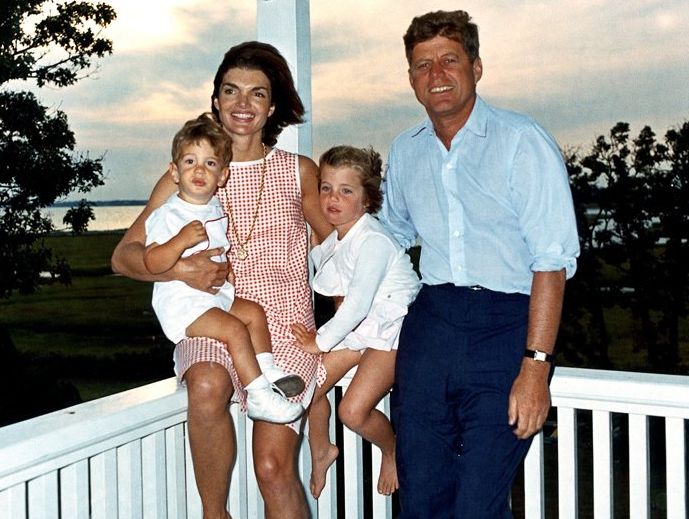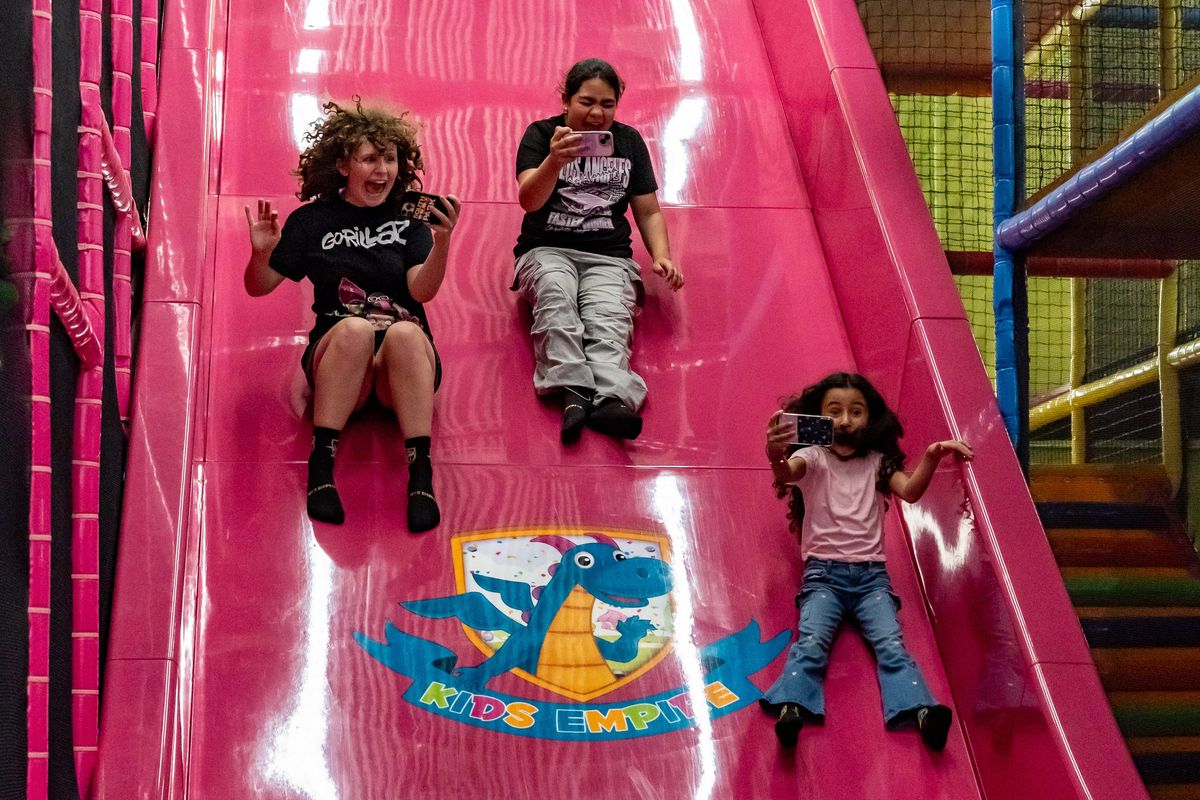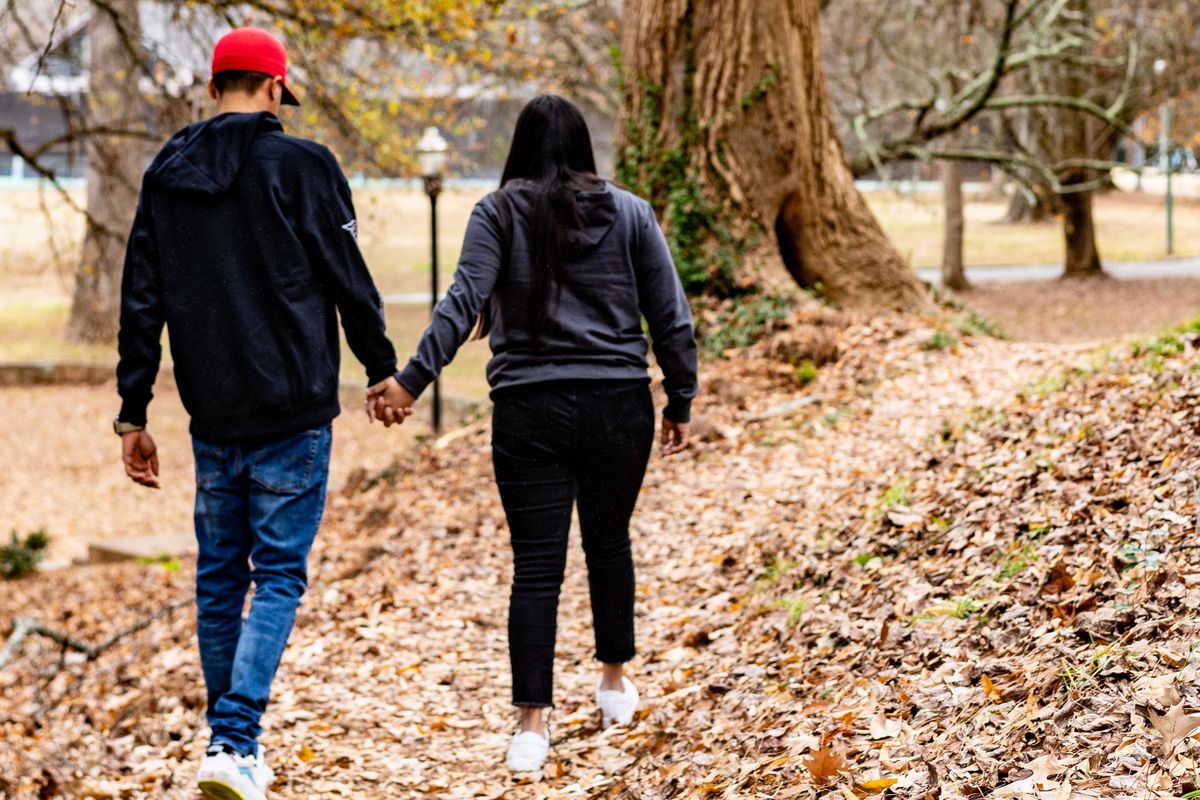The United States feels on edge right now, with passions running high and partisanized rhetoric ramping up in the days following Charlie Kirk's assassination in Utah. For non-extremists, it's disheartening to see people on both "the left" and "the right" being painted in sweeping brush strokes filled with vitriol.
Most of us don't live like this in our everyday lives. Most of us don't live at extremes and are capable of nuanced thought. We acknowledge that the world's problems are complex and know that we aren't always going to agree on every solution. While we may disagree, sometimes vehemently, we don't paint half of our fellow Americans as the enemy.
 Political polarization is out of control. It doesn't have to be this way. Photo credit: Canva
Political polarization is out of control. It doesn't have to be this way. Photo credit: Canva
A woman in Utah, Ashley Rankin, was feeling overwhelmed and confused about the state of the country when she decided to make a video plea for compassion and understanding. "While recording, I zoned out for a second and my face perfectly captured how I felt in that moment," she tells Upworthy. "I dropped the words and thought, rather than telling people to spread love, hope, and compassion, I want to see what they will do, when presented with the opportunity."
So she overlayed her few-second video with "If you lean left, tell me something you respect about the right. If you lean right, tell me something you respect about the left," adding, "Let's spread hope." She asked viewers to fill her comments with positivity, and in a miraculous flip of the script we so often see online, people delivered exactly what she asked for.
@gynamite_Please fill my comments with positivity! I live in Utah and things feel heavy here. #bridgingthedivide #HopeInHumanity #BetterTogether #UtahCommunity #positive
The comments filled up with people leaning one way or the other—sometimes even pretty far to the left or right—expressing their respect and admiration for various characteristics and beliefs of the "other side." It's truly a beautiful outpouring that demonstrates how much closer we are than we think:
"I am conservative, but I appreciate the left's fight for free lunches and universal healthcare. I don't believe anyone should starve or be denied medical care because they can't afford it."
"Left here: I respect how the right heavily advocates for the farm and rural communities. We really do need to send more resources out to them and respect our farmers more."
"Lean right - love the passion of the left and how they always want to speak up for the smallest person in the room."
"Straight blue voter here. I do appreciate the conservative principle of fiscal responsibility for the govt. We may disagree how our tax dollars are spent, but I don’t disagree that govt is wasteful."
 Season 19 Episode 10 GIF by The Simpsons Giphy
Season 19 Episode 10 GIF by The Simpsons Giphy
"More conservative, but I love how the left advocates for preserving our earth, mental health, and resources for those who NEED them."
"As a Democrat I appreciate republicans patriotism and love for country and support for our troops and veterans. I just wish their representatives would vote to support those things that most of their constituents want to support."
"I’m more right than left, but I respect the left for their belief that you don’t have to be a traditional family to have family values. I actually agree with that."
"Leftist here 🤘🏼 I live in a deeply conservative, rural area. Whenever I’m in need, there’s help. Fresh baked bread randomly, the mechanic giving me free advice/discounts, fresh farm eggs cheaper than the store🥹"
"I’m mostly conservative. I appreciated the level of anger and ongoing fight regarding the undoing of roe v wade."
"Extremely left here, I appreciate how fiercely the right stands up for the working people; farmers, etc. I also am with them on getting violent criminals off the streets."
 People on the right tend to support rural life.Photo credit: Canva
People on the right tend to support rural life.Photo credit: Canva
"I’m conservative. I do truly respect that the people on the left wanting gun control have good hearts and genuinely want the gun violence to end."
"Dear Left-leaning people, Thank you for your fight for immigration rights. I may not 100% agree with how we get there, but, everyone deserves the right to come into the country and to have a chance for a better life."
"By far the BEST comment section I've ever seen. I lean left heavily but I've always admired how persistent Republicans are at pushing legislation and the change they want to see."
Perhaps surprisingly, perhaps not, there was a ton of love for John McCain and Barack Obama coming from opposite sides of the aisle in the comments.
"My family was always conservative, but everyone voted for Obama twice. Sometimes we have to accept that labels are for soup cans and vote for the person better qualified to lead."
"I’m a lifelong Democrat. I really loved John McCain! I thought he was such a well-rounded example of a true American patriot!"
"I lean more right, but Obama was the last president I felt like we all respected."
"I don’t 'lean' left: I am left. However, I think John McCain also conducted himself with so much integrity. I think he tried to do a good job and actually cared about the people in this country."
- YouTube www.youtube.com
"I am very Liberal and Canadian BUT when John McCain defended Obama against Muslim/ Arab attacks at his town halls…. I literally cried."
"I lean right, but I think the last time we had any dignity in politics, and I felt secure as a nation was when President Obama was in office. I think he’s an incredible leader, and he was the last time I trusted the person in power."
"I respect how John McCain stood up for Obama at one of his rallies and how he silenced the boos during his concession speech. Truly miss that kind of politics. Where we could disagree on issues but didn’t tear other down."
Mostly, though, people were just relieved and delighted to see how genuinely kind and heartfelt the comments were.
"This comment section glued a tiny piece of my heart back together."
"These comments are not what I expected to see. It gives me hope that we are not as divided as politicians and media wants us to believe."
"Reading all these comments makes me realize that we should be fighting extremists (both left and right) instead of each other."
"This is the most mature comment section I’ve seen. This is the dialogue I want to see. It’s easy to speak to each other when we do it in a respectful way rather than resorting to name-calling and oppressing others."
We really do have more in common than the online discourse and political rhetoric from many politicians would have us believe. Social media algorithms may reward extremism, but videos like this and the responses they're receiving are far more indicative of the reality most of us live in. Rankin's video has accumulated over 10,000 comments and they are overwhelmingly positive.
"I posted the short video hoping a few people would have genuine and respectful words, but was not expecting much," Rankin says. "I had NO idea the impact it would have on me and so many others. The comments were exactly what my weary heart needed. I'm finally proud to be an American again."


 Don Draper from AMC's "Mad Men" Image via "Mad Men" AMC
Don Draper from AMC's "Mad Men" Image via "Mad Men" AMC John F. Kennedy with his family Image via Wikicommons
John F. Kennedy with his family Image via Wikicommons Sandra’s granddaughter, E’s daughter, and another friend at an indoor park (July 2025)
Sandra’s granddaughter, E’s daughter, and another friend at an indoor park (July 2025) One of the ladies Sandra sponsored from Venezuela and her partner during Sandra’s first visit to meet her (December 2023)
One of the ladies Sandra sponsored from Venezuela and her partner during Sandra’s first visit to meet her (December 2023) How do you measure success as a stay-at-home mom?
How do you measure success as a stay-at-home mom? Work done in the home is never "done" and often goes unrecognized.
Work done in the home is never "done" and often goes unrecognized.  Validation comes in different ways for stay-at-home moms.
Validation comes in different ways for stay-at-home moms. These moments may be harder to remember. Image via Canva
These moments may be harder to remember. Image via Canva You'll probably forget the stress of these days too. Image via Canva.
You'll probably forget the stress of these days too. Image via Canva. Political polarization is out of control. It doesn't have to be this way.
Political polarization is out of control. It doesn't have to be this way.  Season 19 Episode 10 GIF by The Simpsons
Season 19 Episode 10 GIF by The Simpsons  People on the right tend to support rural life.
People on the right tend to support rural life.